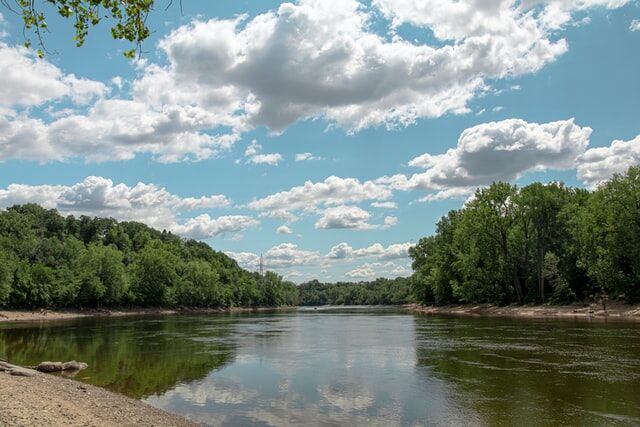What is environmental racism?
Courtesy of Mathew Benoit on Unsplash
Environmental racism affects minority communities in more ways than one.
February 14, 2022
The theme of this year’s Black History Month is Black Health and Wellness, and one factor that affects the health of people of color is the environment. Environmental racism occurs when “people of color suffer a disproportionate amount of environmental harm due to institutional and governmental regulations, policies, and decisions,” according to a guide created by the Iowa State Library.
Environmental justice, on the other hand, is achieved when all people have a clean environment and access to natural resources. A work of fiction that involves themes of environmental justice is “The Hunger Games,” in which a majority of the future North American population lives in poor conditions while the ruling class lives in luxury, and citizens must risk being selected to fight to the death in order to gain more resources.
People with greater ability to participate in the political process have more power to keep undesirable facilities from being built where they live. The refusal to support unpleasant facilities in an area where someone lives is called the Not In My Backyard, or NIMBY, phenomenon. Robert Bullard, who is commonly referred to as the “father of environmental justice” and holds a doctorate in sociology from Iowa State University, wrote an influential book, “Dumping in Dixie,” which describes the environmental justice movement and the disproportionate exposure to pollutants that Black communities face.
Lack of access to clean water is one way that environmental racism can manifest. The Flint Water Crisis is one example of a situation that has been described as environmental racism, such as in 2016 by the New York Times. In that case, lead pollution from the Flint River caused residents of Flint, the majority of whom are Black, to become ill.
As with Flint, the issue of poor water quality—due to synthetic fertilizer runoff—appears in Iowa. Synthetic fertilizers from fields in Iowa can travel down the Mississippi River and affect the environment of the Gulf of Mexico. These fertilizers result in the growth of algae, which deprive the water of oxygen and kill marine wildlife. Algal blooms also often occur in the summer in Iowa and can cause health problems in people and animals that swim in lakes.
Chris Morris, a second year PhD student co-majoring in rural sociology and sustainable agriculture, and who spent 15 years working for the United States Department of Agriculture Natural Resources Conservation Service, gave a number of practices that can be used to mitigate these and other effects of unsustainable agriculture. Sustainable practices include no-till farming, planting cover crops to keep soil in place, rotating between more than just two crops, planting strips of prairie to act as barriers to runoff and erosion and using livestock to naturally fertilize fields.
“As taxpayers, we’re basically paying the government to subsidize agriculture that is not in the best interest of the farmer, not in the best interest of the consumer and not in the best interest of the land. We could subsidize things like sustainable agriculture. Farmers want to do the right thing. Farmers care about their land,” Morris said.
Poor air quality is another way that environmental racism can manifest in Iowa. Although it is not written from an environmental racism perspective, the website shouldyoumovetosibleyia.com provides an example of one person’s experience living next to a facility that decreases air quality.
People of color, who are more likely to live in areas with pollution and poor air quality than white people, have a higher risk of dying of COVID, according to an article on Nature.com. In Iowa, poor air quality can be seen in the areas around farming operations where people work and live.
“Before you get to the Mississippi River, the air quality in and near confined animal feeding operations, CAFOs (concentrated animal feeding operations), is very poor,” Morris said. “The people working in those barns, that again, the hired labor tend to be not white, they tend to be Hispanic usually.”
According to the USDA Economic Research Service, 57 percent of hired farm laborers in the U.S. are of Mexican descent.
Morris said that the use of unsustainable farming methods are the result of legislation and that farmers have followed advice from the government to do what is necessary to receive subsidies and protect their livelihood.
“At a broader level, the economics that are set up force the farmers to do what they’re doing,” Morris said. “They have to maximize yields and minimize losses so that they can get a decent price, or else they risk losing their farm. If farming is the only thing they know, that’s akin to losing their identity. And the two crop system was created basically by the government because those were the two main crops that the government would subsidize. So government subsidies come into play.”

















